A House, A Home, A Home-Away-From-Home The History of the Hitchcock-Phillips House
By Mitzi Romano
The assignment was simple: Go to Town Hall and do a title search for the Hitchcock-Phillips House. How difficult could that be? We already knew the basics:
- Rufus Hitchcock built the house in 1785.
- The west wing was added around 1820 when Rufus’s son William brought his wife home to live there.
- Rufus died in 1832.
- In 1834, William’s family moved to Waterbury and his sister Lucretia and her family with Rev. Peter Clark moved into the house.
- At some point, the house is passed down to Lucretia’s daughter Maria, who is married to Andrew W. Phillips, an instructor at Cheshire Academy.
- When A.W. Phillips became a professor at Yale, the family moved to New Haven and used the house as their summer home, until 1907, when the house was sold to Alfred Bennett.
- Mr. Bennett used the house as a rental property until he sold it to the Roxbury School (the Academy’s name at that time) in 1930.
- The School used the house as a dormitory.
- In 1972, Cheshire Academy sold the house to the Town of Cheshire, which then leased it to the Historical Society,
As it turned out, the trip to Town Hall was only the beginning of a journey that would take me to the Town Library, the Cheshire Academy archives, Ancestry.com, and through the nooks and crannies of the world wide web.
The Hitchcock House
According to the detailed records that Rufus Hitchcock kept, he built the Georgian Classical house that now bears his name in 1785, when he was just 25 years old. The cost to build the house was 348 pounds, 18 shillings, 8 pence. And the materials used to build the house included 4550 clapboards, 1600 shingles, 13,572 nails, and 179.5 pounds of large nails.
So, what did that original house look like? Since building permits were not required until the 1950s, I had to turn to older newspaper articles to provide details. According to a 1933 New Haven Register article, it did not include any ells or dormers but did include a single-story wing on the northeast corner. The current front doors with their “arrow” hinges and latches and bulls-eye glass windows are original to the house.
Seven years after building this house, on July 11, 1792, Rufus married Hannah Lewis of Southington. Rufus and Hannah had three children: Jared Rodney (who was born in 1793 and died at just nine months of age), Lucretia, and William Rufus. When Lucretia was just four years old and William Rufus only one year old, Hannah died in childbirth, at age 30. For eight years, Rufus was a single parent to Lucretia and William, until he married Flora Gilchrist on December 10, 1807.
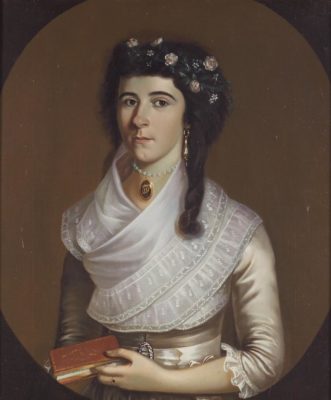
Hannah Lewis Hitchcock, Rufus Hitchcock’s First Wife.
Image used with permission from Connecticut Historical Society.
Rufus and Flora had no children of their own. Rufus was a colonel in the militia, as well as a merchant, justice of the peace, town representative to the state government, and town clerk from 1792 through 1831.
On November 5, 1818, Lucretia Hitchcock married Peter G. Clark (sometimes spelled “Clarke”), an Episcopal minister who was a Navy chaplain.
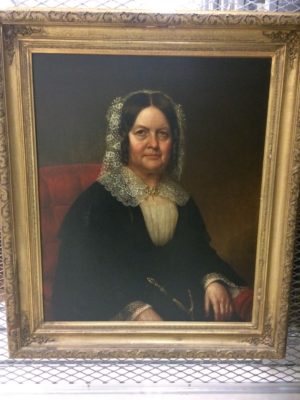
Lucretia Hitchcock Clark(e), Daughter of Rufus and Hannah Lewis Hitchcock.
Image used with permission from Connecticut Historical Society.
On October 20, 1819, William Rufus Hitchcock married Mary Hull and the common belief is that the two-story west wing, heated by four fireplaces, was added to the house around 1820 to accommodate William and Mary’s new family, which grew to include son Rufus Edward, who was born in 1821.
On March 22, 1832, Rufus Hitchcock died and his widow Flora inherited just the original section of the house and half of several outbuildings, as provided in Rufus’s Will:
“I give bequeath & devise to my beloved wife Flora Hitchcock the use & improvements of all that part of my dwelling house which I have occupied since my son has had a family together with the use of the one half of my wood house & the one half of my hog house which I have hitherto occupied for those uses. also a right in the back house such as may be necessary for her convenience. likewise the use & improvements of the yard Northerly & Easterly of the dwelling house extending to the line of Martha Granniss to the hoghouse & to the passway into the front gate & front door of the dwelling house & to the well. reserving to my heirs the privilege of passing across said yard to the well & to the store & garden adjoining in the usual path also the privilege of driving & watering cows at the well in the usual place & manner …”
In 1834, William and his family moved to Waterbury. According to Census records, Flora Hitchcock moved with them but apparently retained ownership of her portion of the house in Cheshire. It appears that it was at that time that the Clark family moved in, and the house actually became known as “The Clark Place” around town.
The Clark Place
The Clark family consisted of Lucretia, the Rev. Peter Clarke (who had reportedly retired from the Navy), and daughters Maria Scoville (born in 1823) and Lucretia H. (born in 1826). Records (including Rufus’s 1830 Will) show that there was also a son, William Henry. The 1933 New Haven Register article notes that William became a clergyman and was the rector of a parish in the South, where he lived for many years. It does not appear that he ever returned to Cheshire.
On September 16, 1844 Flora Hitchcock transferred title to her portion of the house to her stepdaughter, Lucretia, via a quitclaim deed. Flora’s deed is interesting in that it seems to indicate that Lucretia already owned a portion of the property:
“… a piece of land lying in the town of Cheshire on the west side of the public green, described as follows… – … then westerly in the line of said green to the southwest corner of Lucretia Clark’s land, then northerly in the line of said Lucretia’s land … with a Dwelling House and other buildings thereon standing – Bounded northerly on Asa J. Driggs land and land of Wm R Hitchcock subject to my dower right westerly on her own land and southerly and westerly on the public green…”
It appears that William Hitchcock still owned part of the land, but had he sold his portion of the house to the Clarks when he relocated to Waterbury? Was Lucretia given some of the land as a dowry?
According to federal Census records, Peter, Lucretia, Maria and Lucretia H. were still living in the house in 1850. However, Rev. Clark died on January 1, 1860, leaving his widow, two daughters and a servant as the only inhabitants of the house at the time of the 1860 Census. In 1865, Lucretia Hitchcock Clark died. Two years later, on April 23, 1867, Maria, who was now 44 years old, married 22-year old Andrew Wheeler Phillips. In the 1870 Census, the house was inhabited by Andrew, Maria and Lucretia H.
Andrew Wheeler Phillips had become an instructor in mathematics at Cheshire Academy in 1864. But in 1875 he accepted a position as a mathematics tutor at Yale University, and the family moved to New Haven. Over the years, he was promoted to assistant professor in 1881, professor in 1891, and dean of the graduate school in 1895. During this period, Andrew and Maria reportedly used the house in Cheshire as their summer residence.
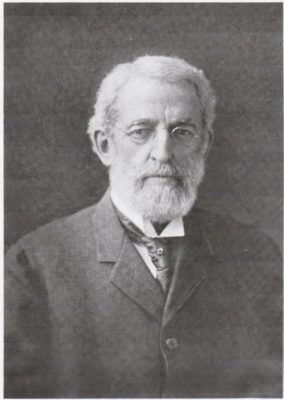
The photo of A.W. Phillips was pulled from “Men of Mark in Connecticut: Ideals of American Life Told in Biographies and Autobiographies of Eminent Living Americans, Volume II”
A.W. Phillips Place
On February 22, 1895, Maria Scoville Clarke Phillips died. Her will left all of her property to her husband, Andrew. Interestingly, the March 16, 1895 Inventory of her estate listed “One third interest in Real Estate in Cheshire (Estate of Lucretia H. Clarke) $666.66”. At this point, mathematics fails me in determining how much of the Hitchcock-Clarke-Phillips House property she actually owned! The December 20, 1901, probate certificate for the estate of Maria S. Phillips certified the transfer
“… to Andrew W. Phillips of New Haven, whatever interest said deceased had in the following real estate to wit all that certain piece or parcel of land with dwelling house and other improvements thereon situated in the Town of Cheshire, Connecticut known as the Clark Place …”
Just four days later, Andrew Phillips transferred ownership to his 75-year old sister-in-law, Lucretia H. Clark via quitclaim deed
“… a certain tract of land with the Dwelling House and other buildings thereon standing situated in the Town of Cheshire in the County of New Haven and State of Connecticut, known as the Clark place containing three acres more or less …”
Slightly four years after that, on January 2, 1906, Lucretia transferred ownership of “the Clarke place” out of the Hitchcock family to Alfred S. Bennett through yet another quitclaim deed.
But before moving on to the Bennett family ownership of the House, one final note about the Hitchcocks. Andrew Phillips had become a widower on February 22, 1895. He eventually remarried on June 27, 1912. His second wife was actually 10 years younger than he and was a widow herself. She was Agnes DuBois Hitchcock Northrop, the daughter of Rufus Edward Hitchcock. She was Maria Scoville Clarke’s first cousin, once removed.
The Bennett Property
So, with this tangle of family relationships, is there a possibility that Alfred S. Bennett was also related to the Hitchcocks? How else to explain the quitclaim transfer, which is generally only used to transfer property between family members?
Based on a 1918 biography I located online, there does not appear to have been any family relationship. Arthur S. Bennett was born in England in 1858 and first arrived in Cheshire in 1880, where he set up a small farm with his brother James. In 1885, he traveled back to England to get married and then returned to Cheshire and engaged in a variety of enterprises, including a butcher shop, cattle partnership, and auctioneer. Like Rufus Hitchcock, he also represented the town in the state legislature. The biography noted that he was retired as of 1909 but the 1910 Census listed him as a farmer and the 1920 Census indicated that he was a public official. Finally, the 1930 Census listed him as retired.
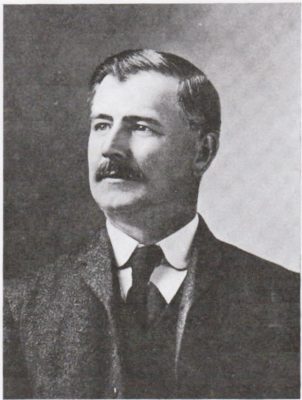
The photo of Alfred S. Bennett was pulled from an article about him in “Taylor’s Connecticut Legislative History and Souvenir., Vol. V, 1905-1906”
It is not clear how A.S. Bennett used this property as it appears he owned quite a bit of property in town. In fact, Bennett Avenue provides one of the boundaries for the Hitchcock-Phillips house property. One article noted that he lived on Bunnell Street, but there is no longer any such street on Cheshire maps. Luckily, the book Landmarks of Old Cheshire published in 1976 by the Cheshire Bicentennial Committee includes a note that Bunnell Street is now called Spring Street. The 1930 federal Census noted that he was then living on South Main Street, with no street number provided. Could that have been the Hitchcock house, even though the house is technically located on Church Drive? Looking at a 1924 map, he also owned property just south of what was then the Methodist Church, on South Main Street, so it is unlikely he was actually living in the Hitchcock house at that time.
The traditional belief is that Mr. Bennett used the house as an income-producing boarding house, until he sold it to the Roxbury School on June 2, 1930. At that time, he took back a $15,000 mortgage on the property, to be paid in full on June 2, 1945. However, a 1969 letter from his son to The Cheshire Academy “Re: Phillips House Mortgage” indicates that the mortgage may have been renegotiated since payments were still being made to his son and two daughters at that time.
Roxbury School and Cheshire Academy
The Roxbury School used the house as a dormitory building, with a resident teacher in attendance. It was named Phillips Hall/House for Junior Boys, in honor of Dr. A.W. Phillips.
In 1937, the Roxbury School became The Cheshire Academy and another quitclaim deed transferred legal ownership to the new entity. The house continued to be used as a dormitory.
Interestingly, one of the resident teachers from the 1960s, who recently toured the house, noted that the first floor of the west wing had been his family’s apartment, just as the entire wing had been an “apartment” for William Rufus Hitchcock’s family. The only building permit for structural changes that is on file in the town’s Building Department was for the conversion of a hallway and stairway into lavatories in late 1966. This may have been on the second floor of that wing.
The Town of Cheshire
On November 30, 1971, The Cheshire Academy transferred title to the Town of Cheshire for $1.00 via a warranty deed. The town now leases the building to the Cheshire Historical Society. But this is not the end of the story, as this search simply raised a number of new questions.
History’s Mysteries
How many fireplaces does the house have? The 1933 New Haven Register article notes that “Eleven fireplaces were in this home and are still available for use.” A 1972 article in The Newtown Bee also notes that “Eleven fireplaces, most still to be uncovered, are listed in the records of the house.” Currently, eight fireplaces are exposed and the location of two still-covered fireplaces is fairly certain. But where is number eleven?
When were the third-floor dormers added? According to the 1985 Historic Resources Inventory of the Connecticut Historical Commission, they were added in 1925, when A.S. Bennett owned the property. This is consistent with the information reported in the WPA Architectural Survey conducted in 1935. But the 1933 New Haven Register article implies that the dormers were added by The Roxbury School.
When was the second story added to the northeast wing?
How and when did the house get “reassembled” into a single property?
How was the house used by A.S. Bennett? Was it a boarding house?
Why did Lucretia Hitchcock transfer the property to A.S. Bennett for just “one dollar and other valuable considerations”?
Do I detect another “simple” assignment coming on?
Mitzi Romano is a recent addition to the Cheshire Historical Society Board of Directors. You may have noticed her photograph of the bulls-eye glass in our Fall 2016 newsletter. Mitzi presented her deed research at our April 30th Annual Meeting and Sunday Afternoon Tea. Mitzi has also set up Cheshire Historical Society on Instagram. She is a frequent Sunday afternoon volunteer and does a splendid job as a docent. Please stop by and request that she give you a tour of the HPH Museum. You’ll be very glad you did!
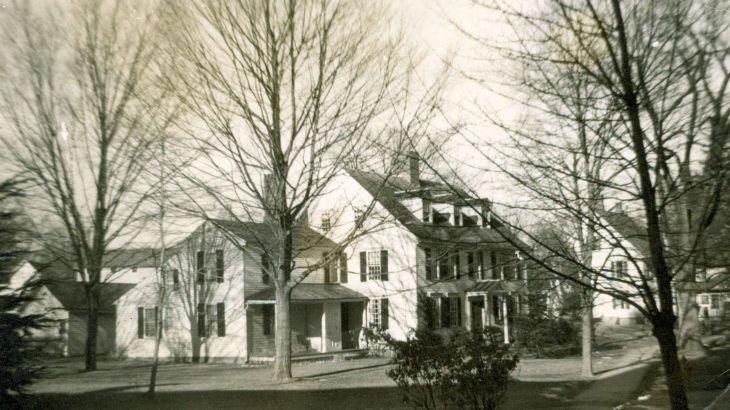

Recent Comments